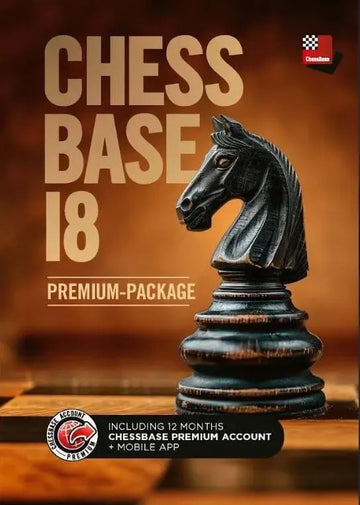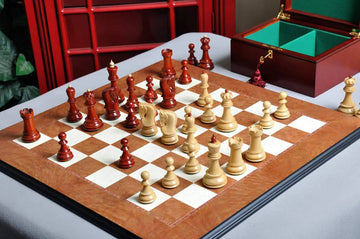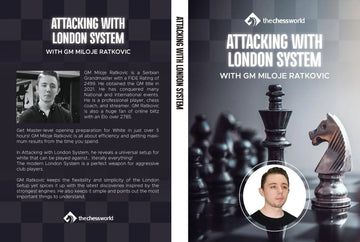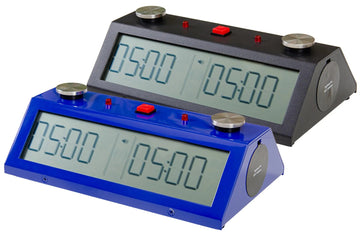Chess Castling: Your Complete Guide
Castling is the most famous and essential special move in chess. It is crucial for beginners to learn the rules of castling. Understanding it thoroughly is also key for intermediate and advanced players mastering opening theory, king safety, and tempo.
In this guide, we’ll start with the basics: the hows, whys, and whens of chess castling. Then, we’ll move on to some of its nuances so you can learn things like when it's best not to castle at all, the weaknesses of a castled king, and how to gain tempo with a queenside castle.

How, Why, and When to Castle
There are several special moves in chess (see pawn promotion and en passant), but the most familiar is castling. For beginners, it takes a little while to understand the many castling rules and even longer to understand the right time to do it.
How: Castling Rules
Castling is the only move in chess that allows you to reposition two pieces at once. It involves moving the king two squares towards either side of the board (g1 or g8 for the kingside and c1 or c8 for the queenside). The rook then moves to the other side of the king (f1 or f8 for the kingside and d1 or d8 for the queenside).
You can only castle if:
- You have not moved your king
- You have not moved the rook you wish to castle with
- You are not in check
- There are no pieces between the king and the rook you wish to castle
- Your opponent controls or attacks any squares you wish to castle through (in other words, you cannot castle through check)
This sounds like a lot, but if you play chess regularly, these rules become second nature. Here are a few examples of positions in which it is impossible to castle.


Why and When: Castling in the Opening
Castling is often the last step in piece development. You (usually) begin by fighting for the center with central pawns and developing your knights and bishops (often knights first). Then, you need to think about protecting your king and activating your rooks.
The easiest way to do this? Castle long or short, putting your king behind connected pawns, and quickly bringing your rook to a central file.
This is why, in most games, players will castle towards the end of the opening. The purpose of this is to get your king to safety and to complete your development by bringing your rook into the game.
To illustrate this, here is an example of how your opponent could gain an advantage if they take away your castling rights.

Here, White sacrifices a bishop, but will quickly gain back the material and a major positional advantage. If Black captures with the king (Kxbf7), White can play Qb3+, forcing the king to move and capturing Black's powerful bishop. White is up a pawn, and Black's king can no longer castle, leaving it vulnerable to attacks.
Long Vs Short Castling
As we’ve seen, there are two directions in which you can castle. These two options are referred to as long or queenside castling and short or kingside castling.
Short Castling
The most common way to castle, by a good margin, is short. Identified in algebraic notation like this, 0-0, kingside castling is one of the most common moves in the opening stage of the game.
Because your king moves closer to one side of the board, castling this way puts your king on g1 or g8, only one square from the edge of the board. This means it is “touching” and protecting three pawns. To castle this way, you also only have to develop two pieces.
As such, the short castle is often the quickest and safest way to finish your development.

Long Castling
The alternative is the long, or queenside, castle. This requires slightly more development and can create a somewhat vulnerable pawn on a2 or a7.
Queenside castling against a short castle by your opponent can be a wise move for an aggressive strategy. Opposite-side castling allows each opponent’s pawns to advance towards the king, creating dramatic middlegames and early wins or losses.
Long castling can be a good option if the D file is open. Protecting your king and developing your rook to a central open file can give you an immediate positional advantage.
The common trade-off with queenside castling is increased piece activity for reduced king safety.

When Not to Castle
Castling is very common in the opening for the reasons we discussed earlier. However, there are plenty of instances when it is not the right move.
There are several openings and middlegame positions where you should delay castling, and games when you will never need to. A mistake beginners sometimes make is thinking that castling kingside is a certain way to protect your king.

In this instance, for example, if Black thoughtlessly castles, White has checkmate in one move.
There are also plenty of long-term positional reasons not to castle. For example, if you open the H or A file for your rook, castling would get rid of that advantage. Another is if you want to push your flank pawns to attack your opponent. The key thing to remember here is that if your king is not castled, you will likely need to work harder to protect it. A king in the center of the board can be protected, but it is much trickier.
Castling and Tempo
From the Italian word for time, tempo, in chess is a concept related to how much you can achieve with a single move. To gain tempo, you can make moves that serve more than one purpose, like moving a piece away from a threat and exposing a threat on the king or a valuable piece (see discovered attacks).
Castling at the correct moment in a chess game serves multiple purposes. For example, you can queenside castle your rook into an open file. This allows you to take control of squares, attack pieces, and deliver checks.

Attacking the Castled King
We know that castling is a good way to protect the king. If you’ve played more than a few games of chess, you will have asked yourself: How do I attack the castled king?
Of course, there are many different answers, including batteries, sacrifices, and pawn storms. However, the most fundamental idea is to put pressure on the squares surrounding the king. The weakest is usually the edge square. For short-castled kings, the h2 and h7 squares are often where you launch your attack.
By gradually putting more pressure on the squares close to the king, you can create opportunities to destroy the king's fortress and deliver checkmate, or force your opponent to give up material.
Defending The Castled King
From the defensive perspective, you must remember that your king is not impervious to attacks once castled. There are many ways your opponent can infiltrate, and you must continue to consider ways to protect your king.
As we’ve seen, h2 and h7 are often weak squares that need additional defense. A common setup is the knight on f4 and f6. This is the natural development square for the knight and provides protection for the weaker pawn; often, these knights will be pinned or captured. As always, king safety needs to be adjusted and considered as the game progresses.
Long-castled kings are often more vulnerable. Immediately after castling, the pawns on a2 and a7 are undefended. As with playing positions with an uncastled king, it is crucial to carefully consider threats when castling queenside.
Castling with A Fianchettoed Bishop
Another common way to protect the castled king is the Fianchettoed Bishop.
This is a feature of many openings; in this instance, the King’s Indian Defense. Regarding offense, the fianchettoed bishop creates a powerful diagonal for the bishop, controlling many squares on the board. In terms of defense, it is combined with castling to protect the squares closest to the king.

Fianchettoing has its downsides. If the bishop is traded off, the king is slightly more vulnerable to attacks with pieces and pawns. It also takes longer than other forms of development, so your opponent may gain additional tempo. They can use this to create more convincing attacks on the king.
Overall, however, the fianchettoed bishop is a strong companion for a castled king.
Related: Surprise Them With The King's Fianchetto Opening
Use Chess Castling to Your Advantage
Castling is a fundamental move in chess. It is such a familiar part of the opening that we are often tempted to use it automatically, without thinking. Considering when to castle, which way, and whether to delay it is a great way to surprise your opponent and find new creative ways to dominate the opening.









